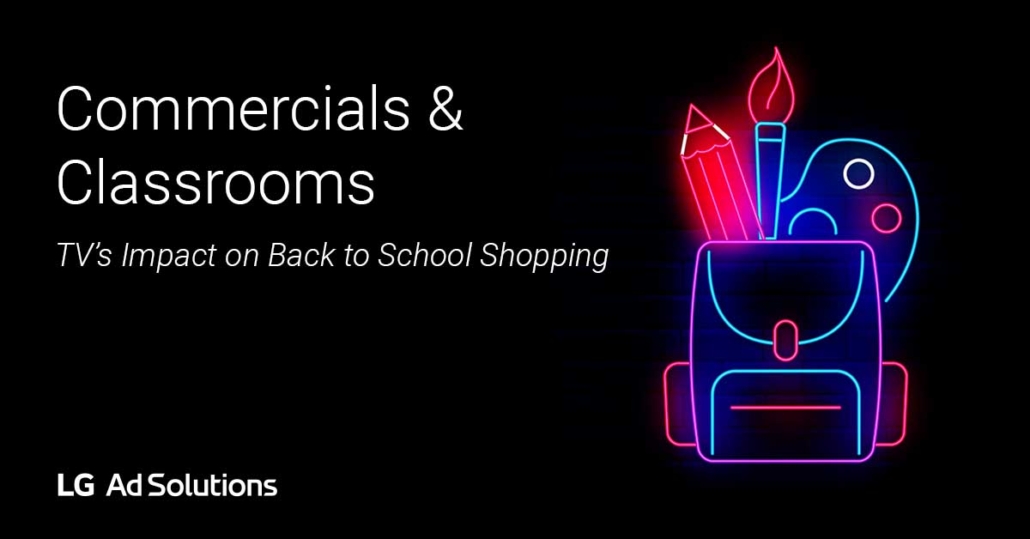 https://lgads.tv/wp-content/uploads/2024/06/LG-Ads_DiversitySeries1_1200x628.jpg
628
1200
LG Ads Solutions
https://lgads.tv/wp-content/uploads/2022/11/lg-ad-solution-allblack-1.png
LG Ads Solutions2024-06-27 04:50:442024-06-27 17:37:35The Inclusive Screen: Black Americans – A Look into CTV Usage and Preferences
https://lgads.tv/wp-content/uploads/2024/06/LG-Ads_DiversitySeries1_1200x628.jpg
628
1200
LG Ads Solutions
https://lgads.tv/wp-content/uploads/2022/11/lg-ad-solution-allblack-1.png
LG Ads Solutions2024-06-27 04:50:442024-06-27 17:37:35The Inclusive Screen: Black Americans – A Look into CTV Usage and PreferencesAdvertising Models
Linear TV
Traditional Broadcast/Cable TV. Households viewing the same shows see the same ad. Advertisers buy specific programs and dayparts based on age/ sex demographic data.
Data-Driven Linear TV
Households viewing the same linear show see same ad. Advertisers buy specific programs based on enhanced viewing data (e.g. psychographic, category/brand usage, etc.).
Addressable TV
Addressable TV is the process of showing different ads to different households via dynamic ad insertion, based on data about the household rather than the program. Addressable TV allows marketers to deliver specific ads to specific people based on their interests, habits, and demographics based on 1st, 2nd, and 3rd party data.
Subsets of Addressable TV
- Addressable Linear TV: Households viewing same linear or Set-Top Box VOD show see different ads. MVPD household data informs audience segmented buys.
- Connected TV (CTV): Households viewing same show see different ads on an internet connected television (via Smart TV or OTT device) with CTV device data, streaming service subscriber data, or other 3rd party data informing audience buy.
Consumption Models
CTV
CTV, or “Connected TV”, is a TV that connects to the internet. This includes Smart TVs that connect to the internet themselves as well as connected devices that plug into a TV including Apple TV, Roku box and stick, Amazon Fire stick, and gaming consoles (e.g. Xbox).
OTT
OTT, short for “Over-the-Top”, is a content provider that can stream media as a service over-the-top of the traditional MVPD infrastructure. OTT is different from traditional telecommunication networks or cable television providers because it functions via internet connection rather than a cable or antenna. The monetization model of OTT may be through subscriptions, advertising, or a combination (e.g. Hulu).
Linear TV
Linear TV is the traditional method of watching television, in which a viewer watches a show or program at a set time on a specific network. The Linear TV viewing experience implies watching content through an antenna or by paying for a cable or satellite subscription to receive a .
MVPD
MVPDs, “Multichannel Video Programming Distributors” are services that aggregate and retransmit television networks to viewers, who pay to subscribe to their service. These service providers deliver video content to consumers on their television exclusively through cable or satellite service. Examples include Comcast, DISH, and Cox.
vMVPD
vMVPDs “Virtual Multichannel Video Programming Distributors” are companies that provide similar services to MVPDs but delivered via the internet. Advertising is served dynamically based on subscriber information. Monetization models include ad-supported and ad-supported plus subscription. Examples include Sling TV, Playstation Vue, Fubo TV, and Hulu Live.
SVOD
Subscription Video-On-Demand (SVOD) is based on a subscription model, and includes video content providers such as Netflix, Hulu, and Amazon Prime. Monetization model is subscription based – content airs without traditional pre- and mid-roll advertising (though may contain brand integrations).
AVOD
Ad-Supported Video-On-Demand (AVOD) is content that is ad-supported, and therefore, remains free of charge. Examples of AVOD platforms are YouTube, Tubi, and Hulu.
Set Top Box VOD
Set Top Box VOD, or Video-On-Demand, is the on-demand viewing opportunity provided by MVPDs. Via Video-On-Demand, viewers can choose their TV content through an interactive TV system and can pause, rewind, and fast-forward programming. Ads are dynamically served into commercial breaks within the content.
PPV/TVOD
Pay-per-view (PPV) and Transactional Video on demand (TVOD) are methods for purchasing content at an additional cost to a subscription service. Pay-per-view content is typically one-time viewing and often live events. TVOD includes the rental and purchase of movies or shows for repeat viewing, either for a fixed time period or in perpetuity.
Other Terms
OEM
Original Equipment Manufacturer. The OEM is the device maker (e.g. LG, Samsung, Vizio). In CTV advertising, the OEMs have access to data from the device as well as advertising opportunities on the device, often called “glass-level”.
ACR
Automatic Content Recognition. The technology of cataloging and recognizing video content via video and audio fingerprinting to develop a comprehensive measure of what is being watched on a TV screen.






